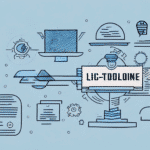Why Customer Retention is Essential for Business Success
In today's highly competitive business landscape, attracting and retaining customers is more important than ever before. Retaining customers means creating long-lasting relationships with them, and it is more cost-effective for businesses than acquiring new customers. In this article, we will explore the significance of customer retention, understand what it means, and discuss various strategies for improving customer retention rates.
The Importance of Customer Retention
Business success relies on several factors such as brand reputation, product quality, customer experience, and marketing activities. However, customer retention is an underrated but critical ingredient in the recipe for business success. By retaining customers, a business can foster a loyal customer base, build a positive reputation, and increase the customer lifetime value. All of these factors contribute to business growth and expansion.
One of the key benefits of customer retention is the cost savings it provides. Acquiring new customers can be expensive, as it requires significant marketing and advertising efforts. According to a study by Forbes, acquiring a new customer can cost five times more than retaining an existing one. By focusing on customer retention, businesses can reduce their overall marketing costs and allocate resources towards other areas of the business.
Another advantage of customer retention is the valuable feedback that loyal customers can provide. These customers have a deeper understanding of the brand and its products and can offer insights into areas for improvement or new product ideas. By listening to and acting on customer feedback, businesses can strengthen their relationships with existing customers and attract new ones through positive word-of-mouth recommendations.
Understanding Customer Retention Metrics
What is Customer Retention and Its Impact on Business?
Customer retention refers to the activities and processes that a business undertakes to keep customers engaged and loyal to the brand. It involves delivering excellent customer experiences that meet the customers' needs and expectations. Customer retention is crucial for a business as it not only increases customer loyalty and advocacy but also decreases customer acquisition costs.
According to research by Harvard Business Review, acquiring a new customer is five times more expensive than retaining an existing one.
One of the key benefits of customer retention is that it helps to build a strong brand reputation. When customers are satisfied with a business, they are more likely to recommend it to others, which can lead to increased brand awareness and a larger customer base. Additionally, loyal customers are more forgiving when a business makes mistakes, which can help to mitigate any negative impact on the brand's reputation.
Another important aspect of customer retention is the potential for increased revenue. Loyal customers are more likely to make repeat purchases and spend more money over time. In fact, research shows that increasing customer retention rates by just 5% can lead to a 25-95% increase in profits (Bain & Company). By focusing on customer retention, businesses can not only save money on customer acquisition costs but also increase their bottom line.
Calculating the Cost of Losing a Customer
The cost of losing a customer can vary depending on the type of business and industry. To calculate the cost of lost customers, businesses need to determine the percentage of customers lost and the revenue generated by those customers. The formula for calculating this is simple:
Cost of Losing Customers = Percentage of Customers Lost x Revenue Generated by Lost Customers
It is important for businesses to understand the cost of losing a customer as it can have a significant impact on their bottom line. In addition to the direct revenue loss, there are also indirect costs such as the cost of acquiring new customers to replace the lost ones and the potential damage to the business's reputation. Therefore, businesses should focus on retaining their existing customers by providing excellent customer service and addressing any issues or concerns promptly.
Understanding the Lifetime Value of a Customer
The customer lifetime value (CLV) is the total revenue that a business can expect from a single customer over the entire duration of their relationship with the brand. It is an essential metric that businesses can use to calculate the ROI of customer acquisition and retention strategies. A higher CLV indicates that customers are loyal to the brand and are likely to make repeat purchases in the future.
Calculating the CLV involves taking into account the customer's average purchase value, the frequency of their purchases, and the duration of their relationship with the brand. By understanding the CLV, businesses can make informed decisions about how much to invest in acquiring and retaining customers. For example, if the CLV is high, it may be worth investing more in marketing campaigns to attract new customers, as the return on investment is likely to be greater in the long run.
Benefits of Focusing on Customer Retention
While acquiring new customers is essential, focusing on customer retention can yield more significant benefits for businesses. Here are some of the benefits of prioritizing customer retention:
- Reduces churn rates
- Increases revenue from existing customers
- Helps in identifying potential customer problems
- Creates brand advocacy and loyalty
- Helps in gaining insights for improving products or services
- Decreases customer acquisition costs
Moreover, customer retention can also lead to positive word-of-mouth marketing, which can attract new customers without any additional marketing efforts. Satisfied customers are more likely to recommend a business to their friends and family, which can result in increased sales and revenue. Additionally, focusing on customer retention can help businesses build long-term relationships with their customers, which can lead to repeat business and increased customer lifetime value.
Strategies for Improving Customer Retention Rates
Businesses can use various strategies to improve their customer retention rates. Some of the effective ones are:
- Offering excellent customer service
- Providing personalized experiences and recommendations
- Offering loyalty programs and incentives
- Conducting customer surveys and taking feedback seriously
- Responding promptly to customer complaints and addressing them satisfactorily
Building Loyalty Through Personalized Customer Experiences
Gone are the days when businesses relied on one-size-fits-all marketing and product strategies. Today, customers expect personalized experiences that cater to their individual needs and preferences. Personalized experiences allow businesses to create a lasting relationship with customers. They also increase customer satisfaction and loyalty. Businesses can personalize customer experiences by using customer data and analytics to identify customer preferences and interests and by creating targeted marketing campaigns.
One way businesses can personalize customer experiences is by offering customized products or services. For example, a clothing store can offer personalized styling services based on a customer's body type, style preferences, and budget. This not only creates a unique experience for the customer but also increases the likelihood of repeat business and word-of-mouth referrals.
Another way businesses can personalize customer experiences is by providing exceptional customer service. This includes responding promptly to customer inquiries and complaints, offering personalized solutions to problems, and going above and beyond to exceed customer expectations. By providing exceptional customer service, businesses can build trust and loyalty with their customers, leading to long-term relationships and increased revenue.
The Role of Customer Service in Customer Retention
Customer service plays a crucial role in customer retention. It is the primary point of contact between a business and its customers. Excellent customer service helps businesses build a lasting relationship with customers and gain their loyalty. On the other hand, poor customer service can lead to churn and negative word-of-mouth publicity. Businesses must invest in customer service and provide exceptional support to customers at all times.
Using Data Analytics to Improve Your Customer Retention Strategy
Data analytics is a powerful tool that businesses can use to improve their customer retention strategy. It involves collecting and analyzing customer data and generating insights that can help businesses make informed decisions. Data analytics can help businesses identify areas for improvement, optimize marketing campaigns, and personalize customer experiences. It can also help in predicting customer behavior and preferences and tailor product and service offerings accordingly.
Keeping Your Customers Happy and Engaged
Keeping customers happy and engaged is the key to building lasting relationships. Here are some tips to keep customers happy:
- Communicate regularly and keep them updated about new products or services
- Provide excellent customer service and support
- Offer personalized experiences and recommendations
- Provide loyalty rewards and incentives
- Address customer complaints satisfactorily and promptly
Common Mistakes to Avoid in Customer Retention
While focusing on customer retention can yield significant benefits, businesses must avoid some common mistakes they make. Some of the common mistakes to avoid are:
- Assuming that customer retention is not essential for business success
- Ignoring negative customer feedback and complaints
- Providing poor-quality customer service or support
- Being too pushy or aggressive in sales or marketing campaigns
- Not personalizing customer experiences
Measuring the Success of Your Customer Retention Strategy
Measuring the success of a customer retention strategy is crucial to determine its effectiveness and make informed decisions. Businesses can use various metrics to measure customer retention rates, such as churn rates, customer lifetime value, and repeat purchase rates. These metrics help businesses understand their customers' behavior, preferences, and buying patterns and identify areas for improvement.
Case Studies: Successful Customer Retention Strategies
Several businesses have successfully implemented customer retention strategies and achieved significant success. Here are some examples:
- Amazon Prime: Provides personalized recommendations and incentives to loyal customers to keep them engaged and coming back for more.
- Sephora: Offers personalized loyalty rewards and experiences based on a customer's purchase history and preferences.
- Zappos: Delivers exceptional customer service and support, free returns, and a 365-day return policy to keep customers satisfied and loyal.
Customer retention is an essential ingredient in the recipe for business success. By fostering loyal relationships with customers, businesses can increase revenue, reduce customer acquisition costs, and gain valuable insights into customer behavior and preferences. Businesses must invest in strategies that prioritize customer retention, such as providing excellent customer service and personalized experiences, using data analytics, and addressing customer complaints and feedback satisfactorily. By doing so, businesses can build a robust and loyal customer base that helps them achieve long-term growth and success.






















